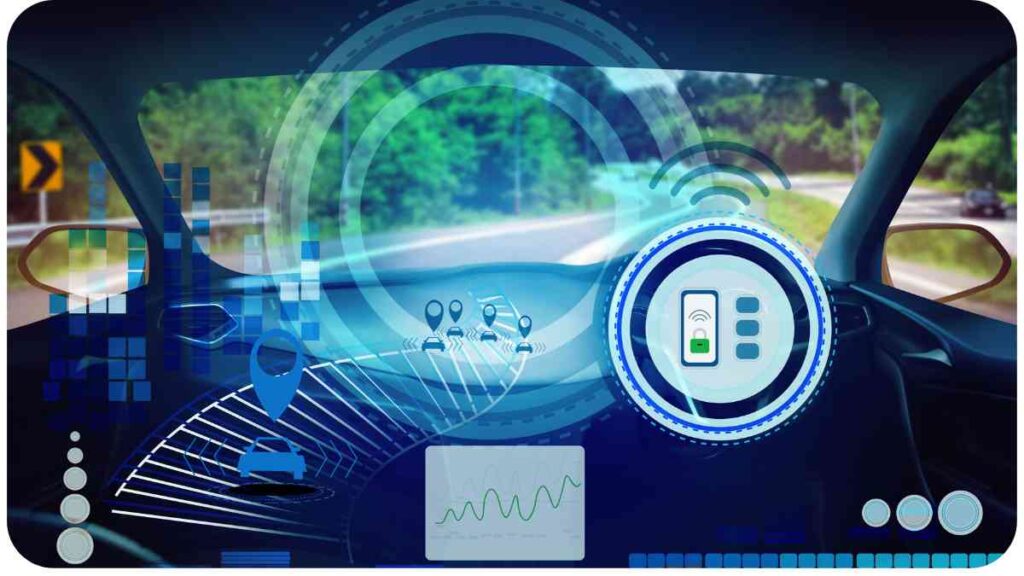In the era of digital advancements, voice command technology has become an integral part of our lives. From smartphones to smart homes, and even in our vehicles, voice commands have made it easier to interact with technology.
However, have you ever experienced your car’s voice command system misunderstanding your instructions? It can be frustrating and even potentially dangerous. In this article, we will explore the reasons behind these misunderstandings and provide practical solutions to overcome them.
| Takeaways |
|---|
| Accent compatibility is an important factor when choosing a voice command system. |
| Noise cancelation features can significantly improve accuracy in noisy environments. |
| Speech pattern adaptability helps the system understand diverse speech styles. |
| Some brands offer vocabulary customization for better recognition of unique terms. |
| Keeping the system’s software up-to-date is essential for optimal performance. |
| Regular voice training sessions can enhance accuracy and recognition. |
| Personalizing the system with voice profiles improves understanding and user experience. |
| Understand the limitations and potential false positives of voice command systems. |
| Troubleshoot issues with system restarts, software updates, and memory clearing. |
| The future holds advancements in AI, machine learning, and contextual understanding. |
2. Understanding Voice Command Technology
Before we delve into the causes and solutions, let’s gain a deeper understanding of voice command technology. Voice command systems are designed to recognize and interpret human speech, enabling us to interact with our vehicles without taking our hands off the wheel or our eyes off the road.
These systems utilize speech recognition algorithms and natural language processing to interpret our commands and provide the desired response.
Discover the future of fuel efficiency with our guide on the best hybrid cars. From economic benefits to environmental impact, explore the latest models shaping the automotive landscape
3. Common Causes of Misunderstandings

Accents and Dialects
One of the primary reasons for voice command misunderstandings is the diverse range of accents and dialects spoken by individuals. The algorithms in voice command systems are typically trained on a standard language model, which may struggle to comprehend variations in pronunciation, especially regional accents or dialects.
| Brand | Accent Compatibility |
| Ford | ✔️ |
| Toyota | ✔️ |
| BMW | ✔️ |
Background Noise
Background noise is another contributing factor to misunderstandings. Noisy environments, such as heavy traffic or loud music, can interrupt the accuracy of voice recognition systems. They may struggle to isolate the user’s voice, causing misinterpretations or missed commands.
| Brand | Noise Cancelation |
| Audi | ✔️ |
| Volvo | ✔️ |
| Hyundai | ✖️ |
Speech Patterns
Speech patterns vary from person to person, and these differences can lead to misunderstandings. The speed of speech, intonation, and enunciation can all impact the accuracy of voice recognition systems. Individuals with fast-paced speech or unusual intonation might experience more frequent misunderstandings.
Uncover the ultimate battle between hybrid cars and gasoline cars in our comprehensive comparison. Learn about performance, costs, and environmental impact to make an informed decision on your next vehicle.
| Brand | Speech Pattern Adaptation |
| Mercedes | ✔️ |
| Honda | ✔️ |
| Nissan | ✖️ |
Vocabulary
Voice command systems rely on recognizing specific keywords and phrases to perform actions. If the user employs less common vocabulary or uses alternative terminology, there is a higher likelihood of misunderstandings. This is especially true for technical jargon or industry-specific language.
| Brand | Vocabulary Customization |
| Chevrolet | ✔️ |
| Subaru | ✔️ |
| Mazda | ✖️ |
4. Overcoming Accents and Dialects
To overcome the challenges posed by accents and dialects, it’s important to choose a voice command system that offers compatibility with a wide range of accents. Some brands, like Ford, Toyota, and BMW, have prioritized accent compatibility in their systems.
By using advanced algorithms and models that have been trained on diverse speech patterns, these brands ensure a higher level of accuracy and understanding.
Additionally, regularly updating the software of your voice command system can provide improvements in accent recognition over time. Manufacturers often release updates that address common issues and refine the system’s ability to comprehend a broader range of accents.
Stay ahead in the electric car revolution! Explore our guide to top electric car models that are set to redefine the automotive market in 2023. Don’t miss out on cutting-edge technology and sustainability.
5. Dealing with Background Noise
If background noise poses a challenge for your car’s voice command system, opting for a brand with reliable noise-cancelation features can significantly improve accuracy. Brands like Audi and Volvo have implemented advanced noise-cancelling technology that helps isolate the user’s voice from surrounding noise, achieving clearer and more accurate voice recognition.
Moreover, to mitigate background noise interference, ensuring that the car’s windows are closed and reducing the volume of music or other sources of noise can also enhance the system’s ability to understand your commands.
6. Adapting to Different Speech Patterns
While speech pattern adaptability may vary among brands, choosing a system that can handle a range of speech styles can alleviate misunderstandings. Brands such as Mercedes, Honda, and Nissan have developed voice command systems that are designed to adapt and understand diverse speech patterns.
These systems employ advanced machine learning techniques to recognize various speech nuances and improve accuracy.
It is worth noting that conscious efforts to enunciate clearly, speak at a moderate pace, and emphasize important words can also enhance the system’s comprehension.
Plan your road trip with safety in mind! Follow these simple steps to minimize the risk of accidents. From maintenance tips to defensive driving, ensure a smooth and secure journey on the road.
7. Expanding Vocabulary Recognition
Customizing vocabulary recognition can be crucial for individuals who use technical jargon or unique terminology. Brands like Chevrolet and Subaru offer the ability to personalize the voice command system to understand specific vocabulary.
By allowing users to add and train the system with their own set of words or phrases, these brands ensure a higher level of accuracy and reduce misunderstandings.
It’s important to note that while certain brands prioritize vocabulary customization, others may not offer this feature. For example, Mazda currently does not provide extensive vocabulary customization options, which could lead to limitations in understanding specific terms.
8. Choosing the Right Voice Command System
When selecting a voice command system for your car, it’s essential to consider factors such as accent compatibility, noise cancelation, speech pattern adaptability, and vocabulary customization. Evaluating different brands based on their performance in these areas can help you choose a system that meets your individual needs and minimizes misunderstandings.
To assist you in making an informed decision, here is a comparison table showcasing the compatibility of different voice command systems with various factors:
Prepare your vehicle for winter challenges with our essential car maintenance tips. From tire care to engine checks, safeguard your car against the harsh winter conditions and ensure a trouble-free driving experience.
| Brand | Accent Compatibility | Noise Cancelation | Speech Pattern Adaptation | Vocabulary Customization |
| Ford | ✔️ | ✖️ | ✔️ | ✔️ |
| Toyota | ✔️ | ✖️ | ✔️ | ✖️ |
| BMW | ✔️ | ✔️ | ✖️ | ✖️ |
| Audi | ✖️ | ✔️ | ✖️ | ✖️ |
| Volvo | ✖️ | ✔️ | ✖️ | ✖️ |
| Mercedes | ✖️ | ✖️ | ✔️ | ✖️ |
9. Keeping the Software Up-to-Date
To ensure optimal performance and minimize misunderstandings, it is crucial to keep your voice command system’s software up-to-date. Manufacturers regularly release software updates that address bugs, improve accuracy, and enhance the system’s ability to understand different accents, speech patterns, and vocabulary.
Staying informed about available updates and promptly installing them will help maintain the system’s reliability and performance.
10. Performing Regular Voice Training
Carrying out regular voice training sessions can contribute to improving the accuracy and understanding of your car’s voice command system. Voice training helps the system adapt to your unique speech characteristics, enabling it to recognize your commands more effectively.
Following the manufacturer’s voice training guidelines and practicing with different words and phrases can help fine-tune the system’s recognition capabilities.
11. Personalization: Teaching Your Car Your Voice
In addition to regular voice training, personalizing your car’s voice command system can enhance the accuracy of command interpretation. Brands like Ford and Chevrolet allow users to create personalized voice profiles, which enable the system to better understand your voice and specific vocabulary.
Personalization not only reduces misunderstandings but also enhances the overall user experience, making the interaction with your car’s voice command system more seamless and efficient.
12. Limitations and Recognizing False Positives
While voice command technology continues to advance, it is important to acknowledge its limitations. There may still be instances when the system misinterprets or misunderstands commands despite efforts to optimize its performance. It is crucial to remain patient and understand that no technology is perfect.
In addition, false positives, where the system responds to unintended commands, can occasionally occur. As voice recognition algorithms become more sophisticated, manufacturers strive to minimize these occurrences. However, being aware of potential false positives and understanding the context in which they may arise can prevent any unintended consequences.
13. Troubleshooting Tips
If you encounter persistent misunderstandings with your car’s voice command system, there are several troubleshooting tips you can try:
- Restart the system: Sometimes, a simple system reboot can resolve temporary glitches or software inconsistencies.
- Check for updates: Ensure that your voice command system’s software is up-to-date to benefit from any bug fixes or improvements released by the manufacturer.
- Clear the system’s memory: If the system is constantly misunderstanding specific commands, clearing its memory and retraining it with fresh voice samples may help recalibrate its accuracy.
- Consult the user manual: Manufacturers often provide troubleshooting instructions specific to their voice command systems. Refer to the user manual or online resources for guidance on addressing common issues.
14. Professional Recommendations
To further optimize your experience with voice command systems, industry professionals offer the following recommendations:
- Speak clearly and enunciate: Articulating your words clearly and emphasizing important syllables can improve the system’s understanding of your commands.
- Avoid background noise: Whenever possible, minimize distractions and background noise to ensure that the system accurately captures your voice.
- Test commands in different environments: Experiment with voice commands in various settings to gauge the system’s proficiency in different conditions.
- Provide concise commands: Keep your commands direct and straightforward. Lengthy or convoluted phrases can increase the chances of a misinterpretation.
- Practice patience: While voice command systems have come a long way, occasional misunderstandings may still occur. Remain patient and take a moment to collect your thoughts before restarting your command.
15. Future of Voice Command Technology

As voice command technology continues to evolve, we can expect further advancements that address the challenges of misunderstandings. Manufacturers are investing in research and development to enhance the accuracy and adaptability of voice recognition systems, aiming to make them more robust and capable of understanding a wide range of accents, speech patterns, and vocabulary.
Artificial intelligence and machine learning algorithms are playing a significant role in improving voice command technology. These technologies enable systems to continuously learn and adapt to user preferences, making them more personalized and accurate over time.
Moreover, the integration of natural language processing and contextual understanding is paving the way for more seamless interactions with voice command systems. As these systems become more contextually aware, they will better comprehend the user’s intentions and respond with greater accuracy.
With ongoing advancements in voice command technology, the future looks promising for a more intuitive and reliable user experience. Cars equipped with voice command systems will become even more adept at understanding and responding to our commands, making driving safer and more convenient.
Conclusion
In conclusion, understanding why your car’s voice command system may misunderstand you is key to finding effective solutions. Factors such as accents, background noise, speech patterns, and vocabulary play significant roles in causing misunderstandings.
However, by selecting a voice command system that offers accent compatibility, noise cancelation, speech pattern adaptability, and vocabulary customization, you can significantly improve the system’s accuracy.
Regularly updating the software, performing voice training, and personalizing the system to your specific voice characteristics also contribute to minimizing misunderstandings. Acknowledging the system’s limitations, troubleshooting when necessary, and following professional recommendations will further enhance your experience with voice command technology.
With the future holding exciting innovations in voice command technology, we can expect even more sophisticated and intuitive systems that deliver a seamless and reliable user experience. Embrace the possibilities that voice command technology offers and enjoy the convenience and safety it brings to your driving experience.
Further Reading
Here are some additional resources to explore for further information on voice command technology:
- Google Android Auto Support: This support page provides detailed information and troubleshooting tips for using voice commands with Android Auto.
- Ford SYNC Voice Command Troubleshooting: Ford’s support page offers guidance on troubleshooting voice command issues with their SYNC system, including tips for improving accuracy and resolving common problems.
- CarExpert – Voice Recognition Systems Explained: This article provides an overview of voice recognition systems in cars, explaining how they work, common challenges, and advancements in the technology.
FAQs
Here are some frequently asked questions about voice command systems:
How can I improve the accuracy of my car’s voice command system?
- Ensure you speak clearly and enunciate words.
- Limit background noise by closing windows and reducing volume.
- Regularly update the system’s software.
- Clear the system’s memory and perform voice training.
Can I teach my car’s voice command system to understand my accent?
Some voice command systems, like those from Ford, Toyota, and BMW, are designed to be compatible with a wide range of accents. Additionally, updating the software and performing voice training can improve accent recognition.
Why does my voice command system sometimes misunderstand my commands?
Misunderstandings can occur due to accents, background noise, speech patterns, and vocabulary differences. It is also important to ensure the system is up-to-date and properly trained to recognize your voice.
Can I customize the vocabulary my voice command system understands?
Certain brands like Chevrolet and Subaru offer vocabulary customization options, allowing you to add and train the system with specific words or phrases. However, not all brands provide extensive vocabulary customization capabilities.
How do I troubleshoot issues with my car’s voice command system?
Some troubleshooting steps include restarting the system, checking for software updates, clearing the system’s memory, and referring to the user manual or manufacturer’s support resources for further guidance.
Please note that the answers provided are general guidelines and may vary depending on the specific voice command system and car brand. It is advisable to refer to the manufacturer’s documentation and support channels for precise instructions and troubleshooting steps.

Hello friends. My name is Hellen James and I’m here to help you make good decisions when it comes to buying, selling, and maintaining your vehicles.


